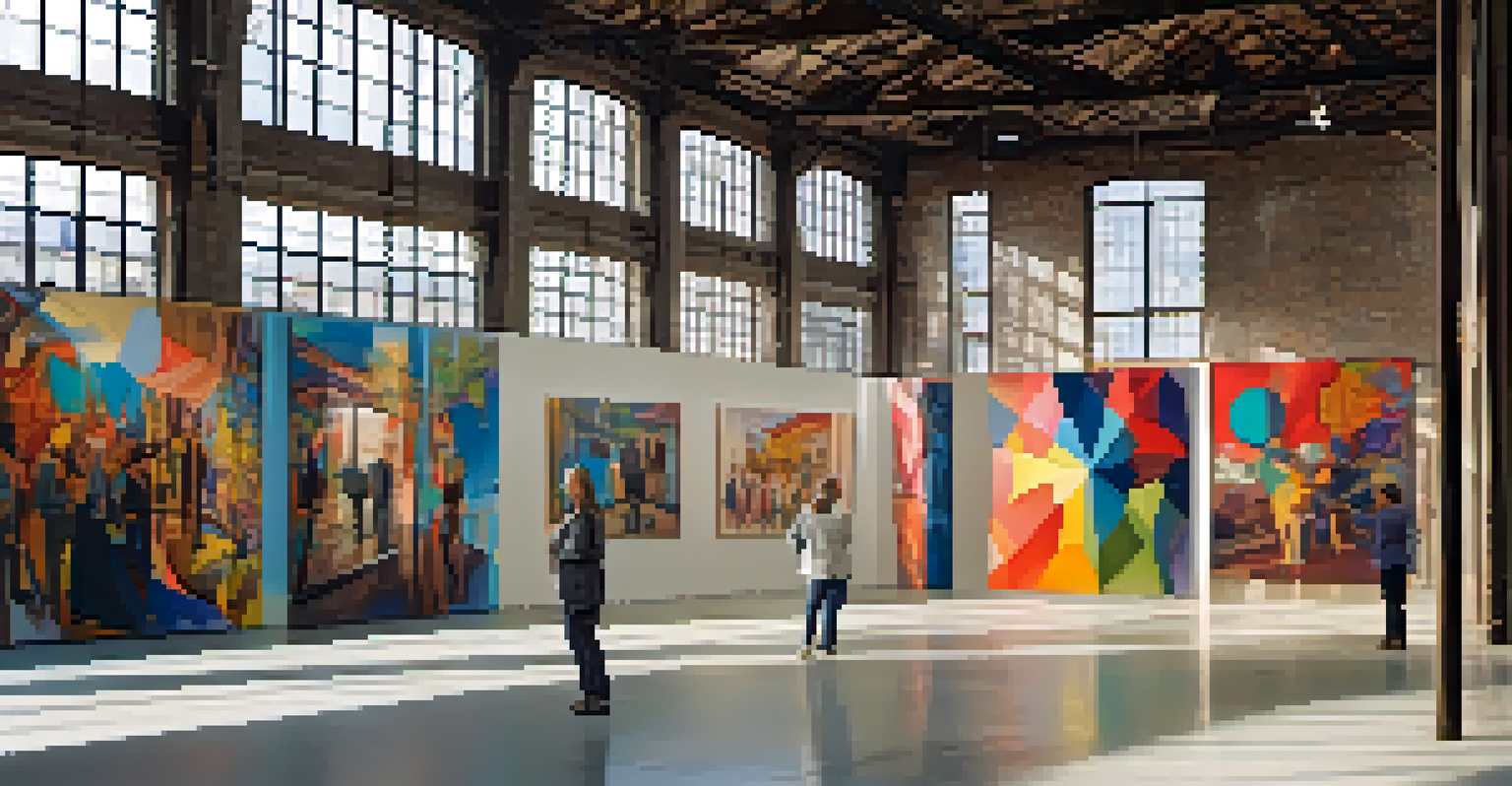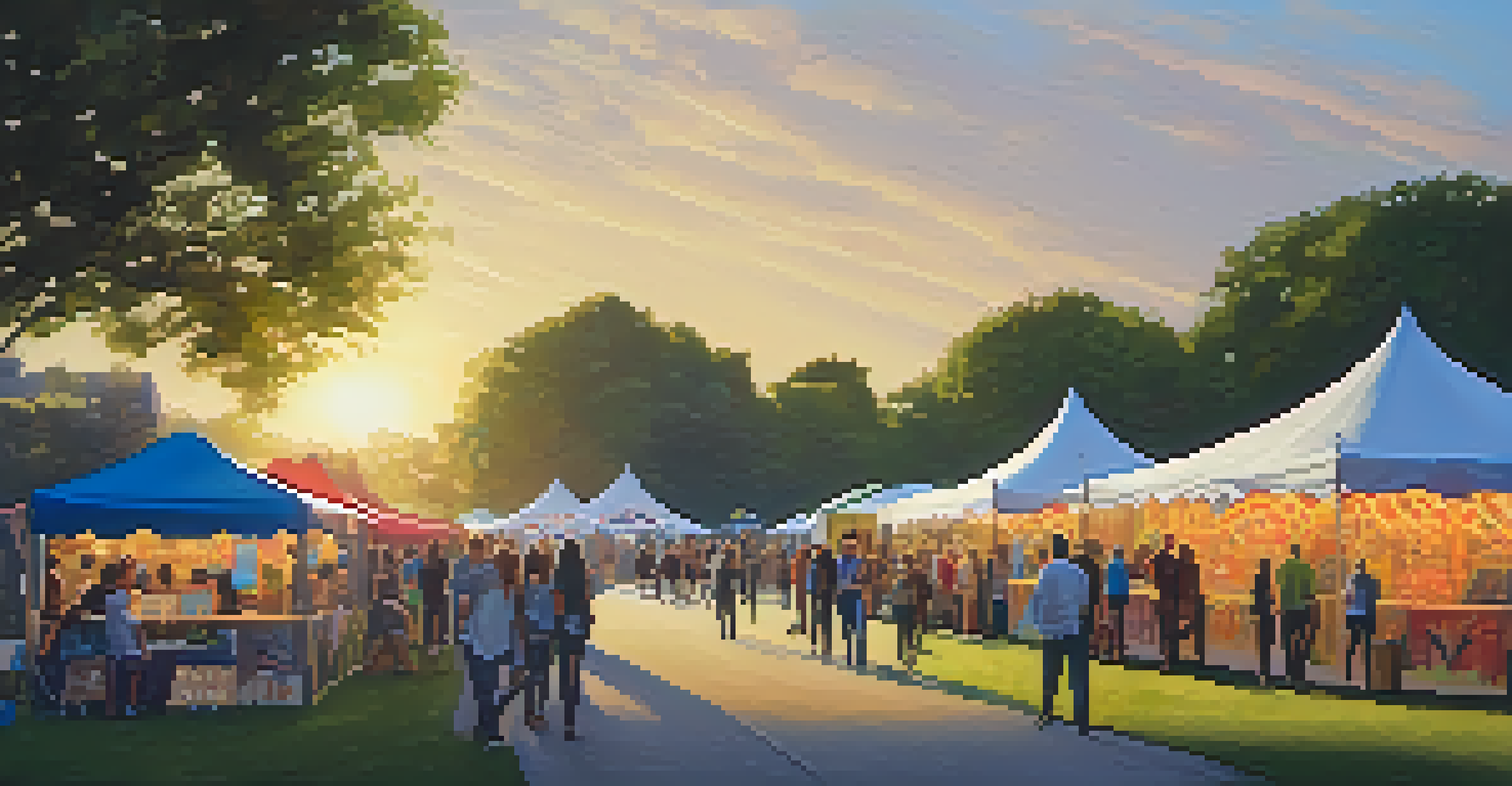Essential Steps for Planning a Successful Art Exhibition

Define Your Exhibition's Theme and Purpose
The first step in planning a successful art exhibition is to define its theme and purpose. This will serve as the foundation for your entire event. Consider what message you want to convey or what emotions you wish to evoke through the artwork on display.
Art is not what you see, but what you make others see.
A well-defined theme helps in curating the artwork and can attract a specific audience. For example, an exhibition centered around environmental issues may feature pieces that provoke thought about sustainability. This clarity not only guides your selection process but also helps in marketing efforts.
Ultimately, a strong theme will engage attendees, providing them with a cohesive experience. Think of it as the thread that ties together all the visual elements, ensuring that every piece complements the overall vision of the exhibition.
Choose the Right Venue for Your Exhibition
Selecting the right venue is crucial for the success of your exhibition. The space should reflect the theme of your event and be accessible to your target audience. Consider factors such as location, size, and facilities available, as these can significantly impact the visitor experience.

For instance, a cozy gallery might be perfect for an intimate collection, while an expansive warehouse could accommodate larger installations. Think about the atmosphere you want to create; the venue should enhance the art rather than distract from it.
Define Theme for Your Exhibition
Establishing a clear theme and purpose lays the groundwork for curating artwork and engaging visitors.
Additionally, logistics like lighting and layout must be taken into account to ensure artworks are displayed effectively. A well-chosen venue not only attracts visitors but also enhances their interaction with the art.
Curate Artwork That Aligns with Your Theme
Curating the right artwork is a pivotal step in your exhibition planning. This involves selecting pieces that resonate with your established theme and purpose. Be selective and aim for a diverse range of styles and mediums that can engage different audiences.
The best way to predict the future is to create it.
For example, if your theme focuses on urban life, you might include photography, paintings, and sculptures that depict cityscapes or everyday moments. This variety can enrich the viewer's experience and provide multiple perspectives on the theme.
Moreover, consider collaborating with local artists or art collectives to showcase their work. This not only supports the community but also creates a sense of authenticity and relevance in your exhibition.
Develop a Comprehensive Marketing Strategy
A thoughtful marketing strategy is essential for drawing visitors to your exhibition. Start by identifying your target audience and the best channels to reach them, whether through social media, local press, or community events. Engaging storytelling around your theme can capture interest and encourage attendance.
Utilize eye-catching visuals and compelling narratives in your promotional materials. For instance, sneak peeks of featured artwork or artist interviews can create buzz and anticipation. Don’t forget to set up an online event page to provide updates and encourage sharing.
Select the Right Venue
Choosing a venue that reflects your theme and is accessible enhances the visitor experience and interaction with the art.
Additionally, consider partnerships with local businesses or organizations to expand your reach. Collaborative promotions can attract new audiences and enhance the overall visibility of your exhibition.
Plan Engaging Opening and Closing Events
The opening night of your exhibition is a golden opportunity to make a lasting impression. Plan an event that encourages interaction, such as artist talks, live performances, or guided tours. This can create a vibrant atmosphere and foster connections between artists and attendees.
Similarly, consider hosting a closing event that reflects on the exhibition's impact. This could include discussions or workshops that engage visitors in deeper conversations about the artwork and its themes. Such events can keep the momentum going even after the exhibition concludes.
Remember, these events are not just about showcasing art; they are about building a community. A well-executed opening and closing can leave attendees feeling connected and inspired.
Ensure Smooth Logistics and Operations
Behind every successful art exhibition is a well-thought-out logistics plan. This includes everything from the transportation of artwork to the setup and breakdown of the exhibition space. Make a checklist of all necessary tasks to ensure nothing slips through the cracks.
Pay close attention to the installation of the artwork, ensuring it is displayed securely and appealingly. Adequate lighting, signage, and visitor pathways also contribute to a smooth flow throughout the exhibition. Conducting a walkthrough before the opening can help identify any potential issues.
Engage Through Marketing Strategies
A comprehensive marketing strategy, including captivating visuals and community partnerships, is essential for attracting attendees.
Additionally, having a dedicated team to handle operations on the day of the event is crucial. This team can assist with visitor inquiries and ensure that everything runs according to plan, allowing you to focus on engaging with your guests.
Gather Feedback and Reflect on the Exhibition
Once your exhibition is over, take the time to gather feedback from attendees, artists, and staff. This invaluable information can provide insights into what worked well and what areas could be improved for future events. Consider using surveys or informal conversations to collect this feedback.
Reflecting on the exhibition's successes and challenges will help you grow as a curator or organizer. It's an opportunity to celebrate achievements and identify lessons learned, which can guide your planning for future exhibitions.

Lastly, sharing your reflection with your community can create a sense of closure and encourage ongoing engagement. This could be in the form of a follow-up email, a blog post, or even a social media recap of the event.